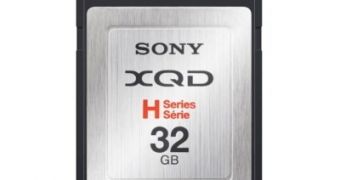The XQD memory card format has been out for less than two years, but already there is cause to develop a more advanced version of the specification, so that's what CFA is doing.
The CompactFlash Association has begun development of the XQD 2.0 specification, which utilizes the PCI Express 3.0 interface standard.
The original XQD used PCI Express 2.0 and managed 2.5 Gbps at first, before reaching 5 Gbps, but XQD 2.0 should be able to achieve 8 Gbps, perhaps even more as time passes.
"The XQD 2.0 specification will be developed in the XQD Technical Workgroup and will leverage the XQD 1.0 specification which was released October 2010. Additional participation in this specification development will be welcomed," CFA said in its announcement.
It will be interesting to see who gets involved in the effort. XQD may have managed to impress some people, but only Sony has been seriously manufacturing them and actively encouraging their sales.
Now that high-end HD DSLR cameras have adopted 108p30 video as the norm, the speed and capacity of XQD could see more recognition.
CFA is preparing for it, since it would not do to lag behind. The NAND Flash market may not be doing particularly well, but that is no cause to lax.
XQD 2.0 will manage a real-time performance of 1,000 MB/s data transfer. Initial demos should happen as early as September (2012).
There may be a more immediate benefit to us consumers though: a drop in current-generation XQD memory prices.
"XQD 2.0 will leverage the same connector interface as XQD 1.0 interface for higher performance and backward compatibility," the association said.
"Host manufacturers and media manufacturers will be able to leverage the next generation of PCI Express technology to serve the high performance requirements of this market. The new format will have VPG (Video Performance Guarantee) capability with profiles capable of supporting digital intermediate formats such as ProResTM, DPXTM, and DNXhdTM."

 14 DAY TRIAL //
14 DAY TRIAL //